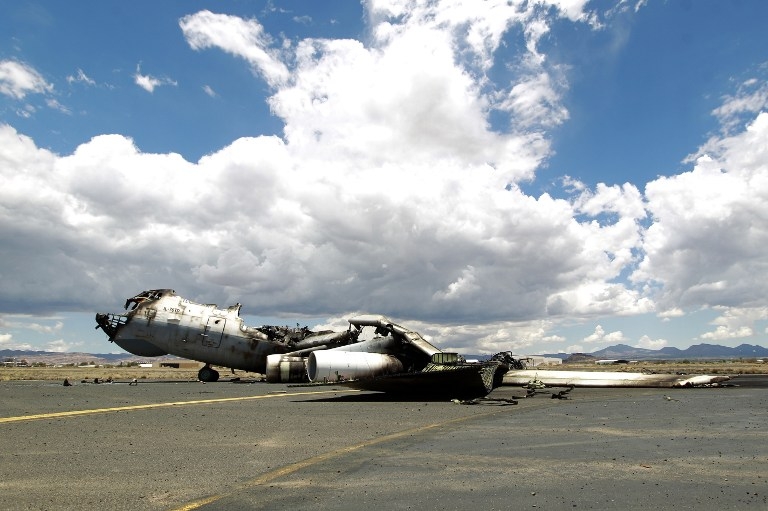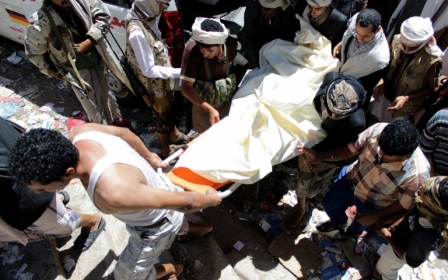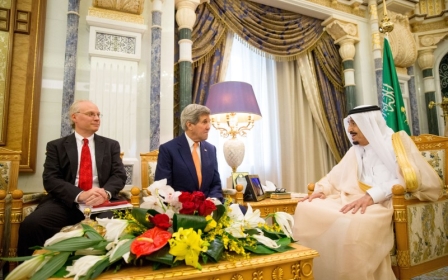Saudi-led warplanes bomb Sanaa airport, aid flights in doubt

Warplanes from the Saudi-led coalition struck Sanaa's international airport on Saturday, shortly after authorities in the Houthi-controlled Yemeni capital said it would reopen to receive humanitarian aid, witnesses said.
The runway was hit by two missiles, witnesses said, a day after the civil aviation authority in Sanaa announced it would temporarily reopen the airport, which has been targeted frequently by airstrikes.
Earlier on Saturday, warplanes hit a nearby airbase, following a night of intensive bombardment of Houthi positions in their northern stronghold of Saada.
The strikes on Saada came just hours after leaflets were dropped warning residents to evacuate.
Though there were reports that Saada residents were arriving in Sanaa en masse on Friday, a former Saada resident with family still in the province said his parents and many others were hiding in nearby mountains.
"Nobody is leaving by car, not even the rich people," Abdulrahman al-Razhi, a 20-something Yemeni studying in Malaysia, told MEE on Friday.
"There is no fuel, and not everyone has cars. People are also afraid to leave by car because they know that the roads are also a target. Two days ago, a food truck was blown up as it tried to deliver supplies in Saada."
Saudi Arabia on Friday announced a humanitarian ceasefire in Yemen starting on 12 May, but has vowed to step up retaliatory strikes on Houthis, whom it accuses of launching cross-border attacks on the kingdom.
Middle East Eye propose une couverture et une analyse indépendantes et incomparables du Moyen-Orient, de l’Afrique du Nord et d’autres régions du monde. Pour en savoir plus sur la reprise de ce contenu et les frais qui s’appliquent, veuillez remplir ce formulaire [en anglais]. Pour en savoir plus sur MEE, cliquez ici [en anglais].




